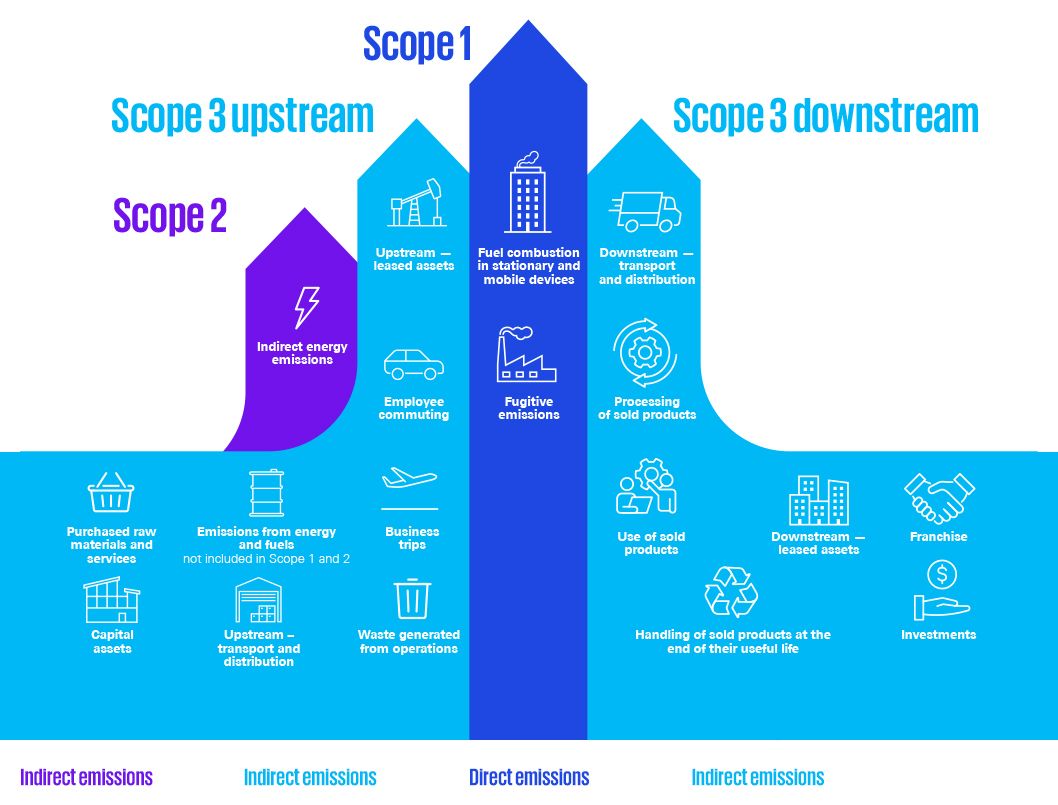The carbon footprint is an environmental indicator measuring the impact on climate change of an organization鈥檚 operations or products (over their life cycle). The need for businesses to calculate their carbon footprint is driven by regional and national climate commitments, financial sector requirements, and increasing pressure from customers and consumers. It is also necessary to develop an effective decarbonization strategy.
What is a carbon footprint, and why is it so important to calculate it?
Scientific reports on the scale of climate change and its sources are accompanied by the adoption of legal regulations covering an increasing number of entities and sectors of the economy. The expectations of business partners and consumers regarding compliance with sustainability principles are also growing. In light of current national and international regulations, calculating carbon footprints is no longer just good practice, but is also becoming an obligation.
The carbon footprint of organizations and products
Calculating the carbon footprint of a product is in line with current consumer trends. In Poland, too, there is a noticeable interest in making more thoughtful purchasing decisions, also in terms of the impact of these decisions on environment and climate. To calculate the carbon footprint of clients鈥� organizations, 乐鱼(Leyu)体育官网 experts use a methodology based on the GHG Protocol, and in the case of products, the life cycle assessment (LCA) method. It is crucial to identify and understand all the processes taking place within the life cycle of a given product, from sourcing of raw materials, to manufacturing, use , and finally waste management.

Challenges for companies in calculating their carbon footprint
Calculating the carbon footprint of a company and its products is a complicated and painstaking process鈥攅specially for people who do not deal with this topic professionally. Without experience in this area, the calculated emissions may not adequately reflect the company鈥檚 actual impact on environment and climate.
If this is not addressed, it may generate problems later with reporting and developing an effective decarbonization strategy, as well as increased costs from the use of environmental resources and services. It should be remembered that the carbon footprint doesn鈥檛 measure just direct emissions into the atmosphere, but also emissions generated throughout the value chain (scope 3), which are the most problematic to calculate and report.

Benefits of cooperation in calculating your carbon footprint
Calculating the carbon footprint indicator, which allows measuring an organization's impact on the environment, besides addressing the issue of carbon footprint, brings the following benefits:

A thorough understanding of the climate and environmental impacts of the company and its products
Developing adequate solutions to reduce emissions
Calculation of costs related to reducing the carbon footprint
Mapping risks鈥攔egulatory, financial, reputational
乐鱼(Leyu)体育官网鈥檚 support in calculating carbon footprints
We have developed a support service for calculating the carbon footprint of clients and their products, sharing our experts鈥� many years of experience in the environmental area.
乐鱼(Leyu)体育官网鈥檚 approach to calculating the carbon footprint of an organization and its products is aimed at:
- Supporting compliance with best business practices, regulations, and ESG reporting systems.
- Aligning the company鈥檚 sustainability strategy with decarbonization targets under the Paris Agreement and EU legislation on the circular economy.
- Meeting the needs of the company鈥檚 stakeholders, including primarily customers, financial institutions, investors and shareholders.
To achieve these aims, we involve our experts in climate change and decarbonization, as well as specialists in ESG reporting. With this approach, the company can go beyond calculating its greenhouse gas emissions, and also integrate decarbonization and circular economy measures into its long-term business goals.
A standard carbon footprint calculation project includes the following steps:
- Defining organizational and operational boundaries.
- Identifying sources of emissions in scopes 1, 2 and 3, based on information obtained from the client and site inspection.
- Preparing a methodology for calculating the organization鈥檚 carbon footprint from all identified emission sources.
- Calculating greenhouse gas emissions in the selected reporting year.
- Preparation of the final emissions calculation report.
About us
At 乐鱼(Leyu)体育官网, we focus on innovative solutions, tailored to the specifics and needs of the client. Drawing on the experience of 乐鱼(Leyu)体育官网鈥檚 global network of experts, we effectively adapt innovative ideas and implementations to Polish conditions.
See more
Submit request for proposal (RFP)
Learn more about how 乐鱼(Leyu)体育官网 knowledge and technology can help your business.
Click to start



